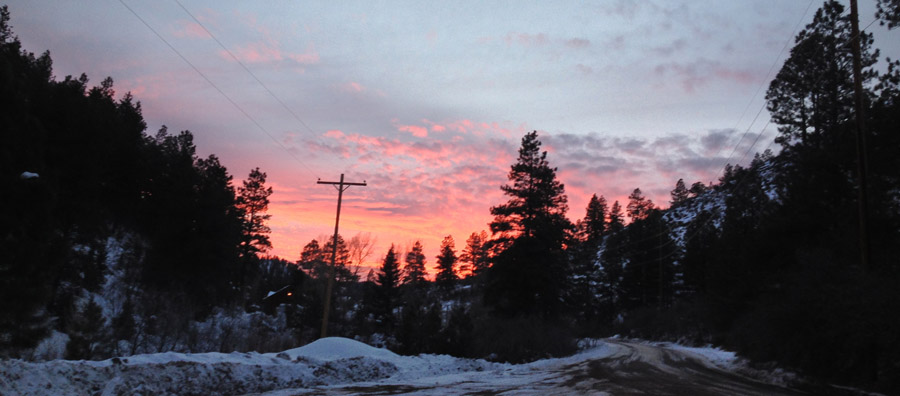|
Moderated by NW Okie! |
Volume 15 , Issue 12013Weekly eZine: (366 subscribers)Subscribe | Unsubscribe Using Desktop... |
Duchess of Weaselskin

As the sunsets in Southwest Colorado, on the turn of a new year 2013, we find our weather at a sunny, calm, chilly broadcast for the last few days, with it looking like that for this next week before another Arctic blast hits through here next weekend.
Remember the Conestogas (or Prairie Schooners)? A few Google searches found that the Conestogas were the large, boat-like wagons with angled ends, sloped floors to the middle so barrels wouldn't roll out when the wagon was climbing or descending a hill. It was developed in Pennsylvania and named for the valley in Lancaster County, Pennsylvania by Pennsylvania-German settlers for hauling freight in the east from 1750 until the railroads came along. They were pulled by teams of six or eight horses and could haul up to five tons. Traders on the Santa Fe Trail found that bullwhackers, muleskinners were preferable to horses because of the immense distances and scarcity of good water along the trail. Two-dozen oxen, mules were used to haul the heaviest loads with a second wagon (backaction) hitched behind the lead wagon.
The Prairie Schooners were a half-sized version of the Conestoga. They measured 4-feet wide and 10-feet to 12-feet in length. The length doubled to 23-feet with the tongue and yoke attached. The schooner stood about 10-feet tall with the homespun, cotton bonnet (doubled over to make them watertight) and had a wheelbase over 5-feet wide. It weighed around 1300-pounds empty. It was 2 to 3-feet deep with a bit of tar to render it watertight to float across slow-moving rivers. It took 4 to 6 oxen or 6 to 10 mules to get the sturdy little wagons across the prairies. It offered shelter almost as good as a house. The front wheels were smaller than the back wheels for easy, sharper turns and extra play.
Other information shows us the prairie schooners were manufactured by a dozen or more wainwrights specializing in building wagons for the overland emigrants. One of those wainwrights was the Studebaker brothers. I know you have all heard of the Studebaker, but did you know they built Prairie Schooners?
Good Night & Good Luck!
| View or Add Comments (0 Comments)
| Receive
updates ( subscribers) |
Unsubscribe
| © . Linda Mcgill Wagner - began © 1999 Contact Me | |
